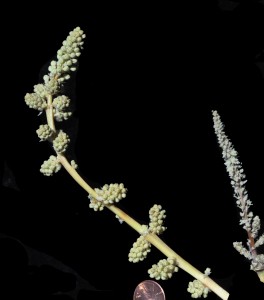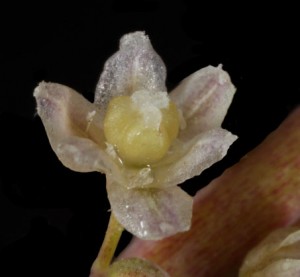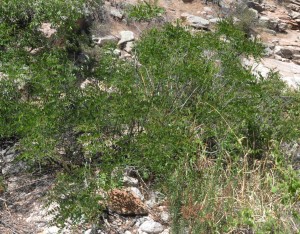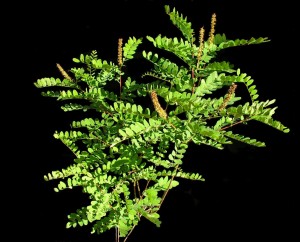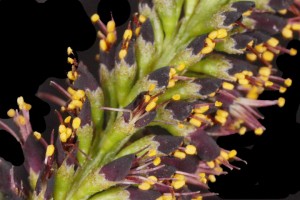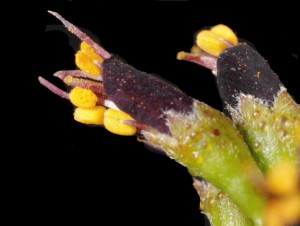Last week a group of us were having lunch after a nature walk. Many of the people in the group were keen bird watchers, so you can imagine their astonishment when they heard the call of an owl in the middle of the day. One woman wanted to see the owl, so she went to investigate. Minutes later she returned, a little bit deflated. “It wasn’t an owl” she explained, “just another bird watcher making owl sounds.” I found out later that some little birds will gang up on an owl to drive it away. By making owl sounds the person was trying to trick some of these little fellows into emerging from the shrubs. I don’t know if he (or she) fooled the little birds. It fooled us.
Today we saw a few birds but I was more interested in getting a close up view of two plants I have known for some time – Bear Grass and False Indigo.
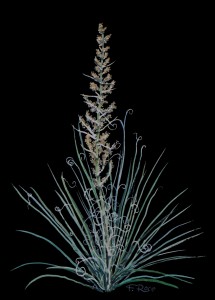
Bear Grass (Nolina microcarpa) is not a grass at all, but a very large plant in the Asparagus family. In May the plants send up a flowering shoot, four feet or more tall. The species is dioecious, meaning that male and female flowers are on separate plants. Whereas the flowering stalk is huge, the flowers are quite small, and we were having some difficulty telling which was the male and which the female. Eventually we found some with tiny little flowers clustered on the long stalk. I was able to get a close up of the flowers, and finally can tell the two apart.
This is a watercolor portrait I did of Bear Grass
The stalk on the left has the male flowers, not yet opened
On the right is the female, with some flowers open and many closed
The penny gives an idea of scale
The male flowers before they open
Here is a cluster of male flowers, with just one of them open
The male flower close up. Note the golden anthers
This is a close-up of a female flower of the Bear Grass
Later we came across a clusters of False Indigo plants – Amorpha fruticosa. From a distance it is hard to tell if the plant is in bloom or not. Up close, you can see the flower stalks, with the bright yellow anthers emerging from a deep purple base. I had never been able to photograph the individual flowers before today. I was thrilled to see what they look like. The genus name, amorphous, means “deformed” referring to the fact that each flower doesn’t have the usual form with a number of petals. It just has a single one curled around, with the anthers protruding from it.
A general view of False Indigo plants in a stream bed
This shows a part of a False Indigo plant with the flower spikes
Here is a flower spike with the flowers on the top portion not yet open
Here we see the individual flowers packed in. The yellow balls are the pollen bearing anthers. The flower petals are purple
A close up of two False Indigo flowers
On the home front, I have been watching the golden barrel cactus in our front yard. A few months ago I noticed that one of them was looking a little sickly. On closer inspection I found that I could see right through it in places. Our property is home to many ground squirrels, and I think they found a way of getting to the fleshy interior of the cactus. On the outside, the plants are well defended. Coming from underground, the ground squirrels found the soft underbelly, and have almost completely hollowed the plant out. They did the same to one of the other two. And yet all three cactus plants are still alive! They are gutted, but not totally defeated.
Our Golden Barrel cactus with holes in the middle where you can see right through the plant. Looking at the plant and moving your head around, you can see that it is almost completely hollow, and yet is still alive

